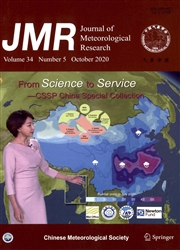Development of Climate and Earth System Models in China: Past Achievements and New CMIP6 Results
作者:Tianjun ZHOU,Ziming CHEN,Liwei ZOU,Xiaolong CHEN,Yongqiang YU,Bin WANG,Qing BAO,Ying BAO,Jian CAO,Bian HE,Shuai HU,Lijuan LI,Jian LI,Yanluan LIN,Libin MA,Fangli QIAO,Xinyao RONG,Zhenya SONG,Yanli TANG,Bo WU,Tongwen WU,Xiaoge XIN,He ZHANG,Minghua ZHANG
摘要:The Earth–Climate System Model(ECSM)is an important platform for multi-disciplinary and multi-sphere integration research,and its development is at the frontier of international geosciences,especially in the field of global change.The research and development(R&D)of ECSM in China began in the 1980 s and have achieved great progress.In China,ECSMs are now mainly developed at the Chinese Academy of Sciences,ministries,and universities.Following a brief review of the development history of Chinese ECSMs,this paper summarized the technical characteristics of nine Chinese ECSMs participating in the Coupled Model Intercomparison Project Phase 6 and preliminarily assessed the basic performances of four Chinese models in simulating the global climate and the climate in East Asia.The projected changes of global precipitation and surface air temperature and the associated relationship with the equilibrium climate sensitivity under four shared socioeconomic path scenarios were also discussed.Finally,combined with the international situation,from the perspective of further improvement,eight directions were proposed for the future development of Chinese ECSMs.
发文机构:State Key Laboratory of Numerical Modeling for Atmospheric Sciences and Geophysical Fluid Dynamics(LASG) College of Earth and Planetary Sciences First Institute of Oceanography School of Atmospheric Science Chinese Academy of Meteorological Sciences Tsinghua University National Climate Center International Center for Climate and Environment Sciences
关键词:Earth–ClimateSystemModel(ECSM)ChinesemodelsCoupledMODELIntercomparisonProjectPhase6(CMIP6)MODELperformanceCLIMATEpredictionandPROJECTIONOUTLOOK
分类号: P456.7[天文地球—大气科学及气象学]
- Major Scientific Achievements of the First China–Japan Cooperative GAME/HUBEX Experiment: A Historical Review
- Identifying and Quantifying Pixel-Level Uncertainty among Major Satellite Derived Global Land Cover Products
- A Multivariable Approach for Estimating Soil Moisture from Microwave Radiation Imager(MWRI)
- Spatial Distribution and Temporal Trend Characteristics of Agro-Climatic Resources and Extreme Climate Events during the Soybean Growing Season in Northeast China from 1981 to 2017
- Bias Analysis and Correction of Ground Surface Temperature Observations across China
- Research Progress on Estimation of the Atmospheric Boundary Layer Height
- Joint Effect of East Asia-Pacific and Eurasian Teleconnections on the Summer Precipitation in North Asia
- Increasing Trend of Summertime Synoptic Wave Train Activity over the Western North Pacific since 1950
- Spatiotemporal Drought Assessment over Sahelian Countries from 1985 to 2015
- Climate Sensitivity and Feedbacks of BCC-CSM to Idealized CO2 Forcing from CMIP5 to CMIP6


